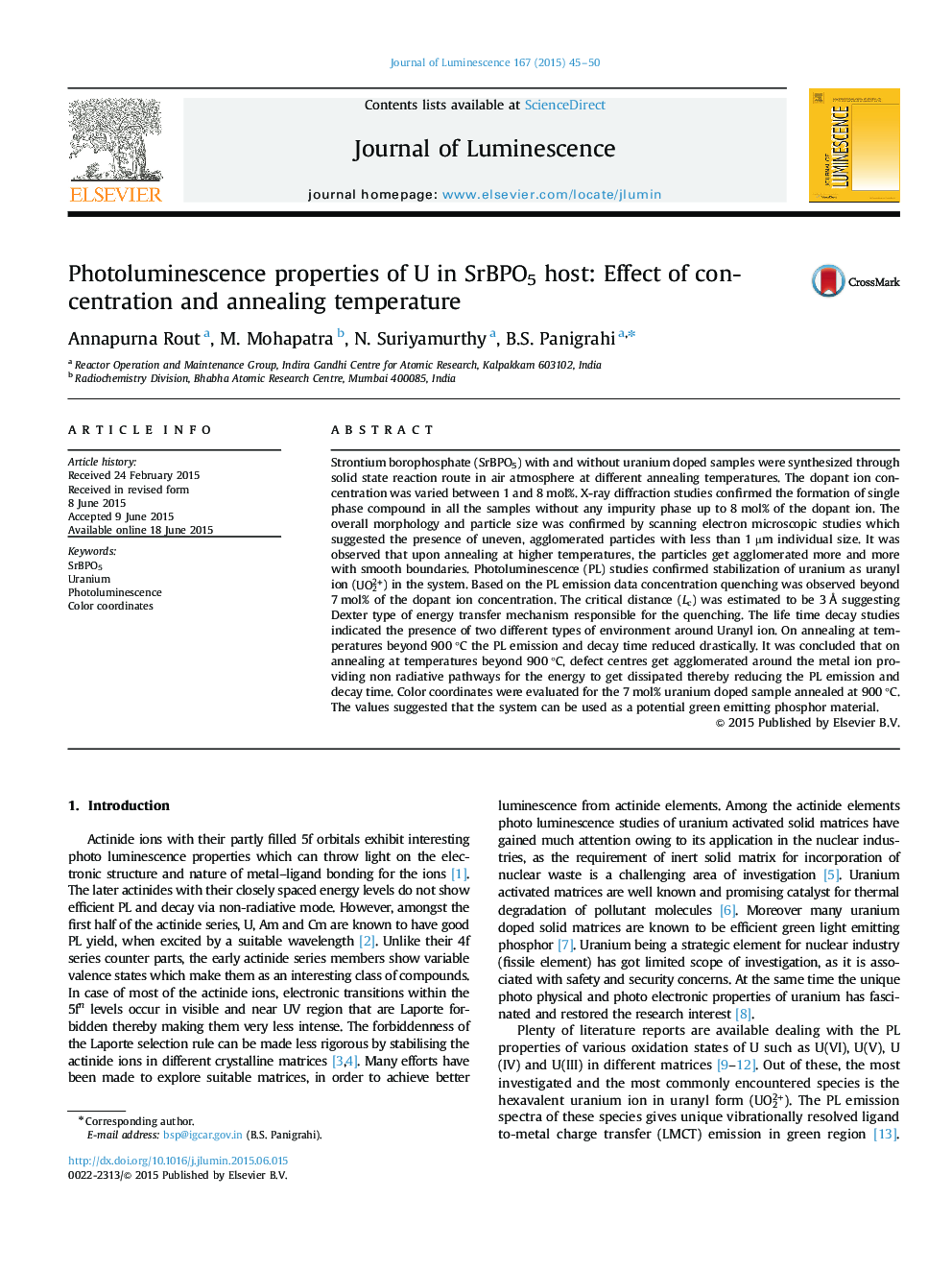| Article ID | Journal | Published Year | Pages | File Type |
|---|---|---|---|---|
| 5398774 | Journal of Luminescence | 2015 | 6 Pages |
Abstract
Strontium borophosphate (SrBPO5) with and without uranium doped samples were synthesized through solid state reaction route in air atmosphere at different annealing temperatures. The dopant ion concentration was varied between 1 and 8 mol%. X-ray diffraction studies confirmed the formation of single phase compound in all the samples without any impurity phase up to 8 mol% of the dopant ion. The overall morphology and particle size was confirmed by scanning electron microscopic studies which suggested the presence of uneven, agglomerated particles with less than 1 µm individual size. It was observed that upon annealing at higher temperatures, the particles get agglomerated more and more with smooth boundaries. Photoluminescence (PL) studies confirmed stabilization of uranium as uranyl ion (UO22+) in the system. Based on the PL emission data concentration quenching was observed beyond 7 mol% of the dopant ion concentration. The critical distance (Lc) was estimated to be 3 Ã
suggesting Dexter type of energy transfer mechanism responsible for the quenching. The life time decay studies indicated the presence of two different types of environment around Uranyl ion. On annealing at temperatures beyond 900 °C the PL emission and decay time reduced drastically. It was concluded that on annealing at temperatures beyond 900 °C, defect centres get agglomerated around the metal ion providing non radiative pathways for the energy to get dissipated thereby reducing the PL emission and decay time. Color coordinates were evaluated for the 7 mol% uranium doped sample annealed at 900 °C. The values suggested that the system can be used as a potential green emitting phosphor material.
Related Topics
Physical Sciences and Engineering
Chemistry
Physical and Theoretical Chemistry
Authors
Annapurna Rout, M. Mohapatra, N. Suriyamurthy, B.S. Panigrahi,
